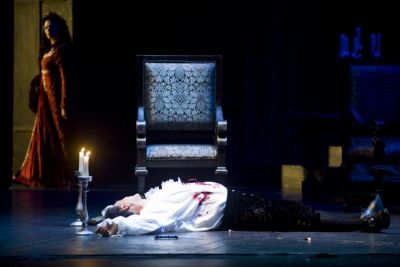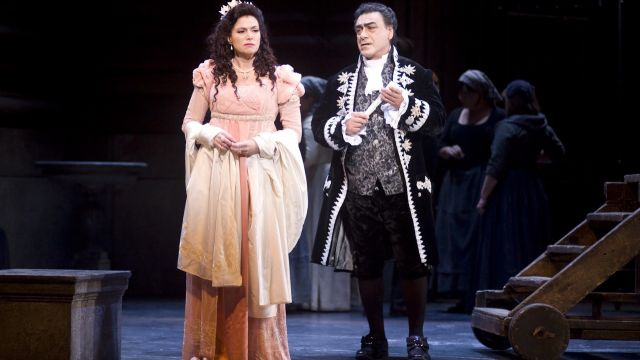Tosca
The costumes are smartly attired, the set design is stunning, the orchestra is stirring, and the singers are sparkling, while the story and music have faithfully served the world of opera for more than one hundred years – so what could possibly be missing?
Inspiration, perhaps; urgency; a strong desire to communicate to agnostics like this reviewer who are open to the idea of live opera becoming a larger part of their lives. Cloudstreet was perhaps the best possible example of an innovative work that broke down barriers and challenged preconceptions; this production feels instead like it was intended as a treat for the traditionalists - and for them, there seems every chance that it will be: after all, if Tosca ain’t broke, why fix it? Those who are essentially new to this world may be left feeling less than completely fulfilled.
Kate Ladner’s eponymous characterisation conveys some impressive depths and shadings to a woman of strength and complexity, Mario Bellanova is supremely watchable – and supremely listenable – playing villainous Baron Scarpia, while Rosario la Spina brings an authoritative vocal ability to the poignant and sympathetic role of Cavaradossi. The emotional triangle that this trio of characters are entangled in, while not without compelling moments and engaging aspects, comes across as a fairly slight basis for a three-act opera. Welcome humour is principally provided by the delightful John Bolton Wood, playing the Sacristan.
 Nicholas Braithwaite conducts an Adelaide Symphony Orchestra whom it is difficult to find musical fault with, while Ashley Martin-Davies’ designs – nicely lit by Nigel Levings - possess the necessary grandeur to leave one in awe. Director Cath Dadd steers this craft smoothly and capably, but the only real jolts to be found are those of the superficial kind (notably the noise of a crashing cannon; be warned!) If the production team was hoping for Tosca’s political subtext to resonate strongly in the context of today’s world, this reviewer must regretfully declare that it instead felt principally like a period piece, rather than a still-vital artwork.
Nicholas Braithwaite conducts an Adelaide Symphony Orchestra whom it is difficult to find musical fault with, while Ashley Martin-Davies’ designs – nicely lit by Nigel Levings - possess the necessary grandeur to leave one in awe. Director Cath Dadd steers this craft smoothly and capably, but the only real jolts to be found are those of the superficial kind (notably the noise of a crashing cannon; be warned!) If the production team was hoping for Tosca’s political subtext to resonate strongly in the context of today’s world, this reviewer must regretfully declare that it instead felt principally like a period piece, rather than a still-vital artwork.
This Tosca is at least a solid achiever at virtually every level, and it will likely satisfy a great many subscribers, but if opera companies are genuinely interested in engaging those who weren’t necessarily raised with the art form as part of their artistic education - and if they wish to convince sceptics that this particular art form can retain its relevance through the generations to come - one would recommend that they seriously consider the potential contribution to be made by modernisation, imagination, and daring; the kind of attributes that were conspicuous by their absence from this production of Tosca.
Anthony Vawser
Photorapher: Ali Feo.
Subscribe to our E-Newsletter, buy our latest print edition or find a Performing Arts book at Book Nook.

